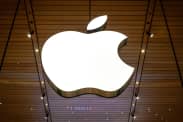Traders are about to encounter a batch of top-tier events this week: a Federal Reserve policy decision and details of Treasury’s coming auction sizes, both on Wednesday, as well as Friday’s official jobs report for January.
No matter the outcome of any of those events, automated trading strategies are likely to buy stock indexes, bonds and gold “in nearly every scenario” for the rest of this week and into part of next week, according to Daniel Ghali, a Toronto-based senior commodity strategist for TD Securities.
That’s because professional investment managers are re-leveraging at a time of greater calm in the financial market, as seen in the Cboe VIX Index
VIX,
which measures expected volatility in the U.S. stock market, and the ICE BofAML MOVE Index that reflects interest-rate volatility in the Treasury market. Via phone on Tuesday, Ghali said managers are expected to buy stock futures, Treasurys, and gold regardless of whether those assets’ prices are falling or rising.
His views are captured in the charts, shown below. TD used simulations of future price paths in equity futures, U.S. government debt and gold to map out various scenarios, and breaks down performance paths into three categories it refers to as “downtape,” “flat tape,” or “uptape.”
In almost every situation but one, Ghali said commodity trading advisers, or CTAs — a type of professional investment manager that uses futures and options contracts to profit from moves in global markets — are set up to buy everything. The only exception would be an extreme surprise that hits the Treasury market. CTAs manage large pools of money and can influence market direction.
“Every single trend signal on our radar is already pointing to the upside in U.S. and EU equity indices, but our simulations of future price paths suggest that CTAs are likely to buy more, even in a big downtape,” he wrote in a note on Tuesday.

How TD expects trading advisers to react in S&P 500 futures if the Federal Reserve either affirms or dashes expectations for a March rate cut.
Source: TD Securities
Algorithmic trades are likely to find a bid in Nasdaq futures.
Source: TD SecuritiesCTAs are “also likely to buy bonds in nearly every scenario,” Ghali wrote. However, he does not entirely rule out the possibility of substantial forced selling activity that could grip the U.S. government-debt market.

Automatic trading strategies are likely to produce buying of Treasury notes, unless there’s an extreme surprise
Source: TD SecuritiesFinally, he said, CTAs are positioned to buy gold in every scenario, at a time when macro traders are historically underpositioned in the precious metal for a rate-cutting cycle. TD expects “notable” algorithmic-driven buying to occur even if front-month prices
GCG24,

TD expects automated trading strategies to buy gold in every circumstance.
Source: TD SecuritiesInvestors were in wait-and-see mode a day ahead of the Fed’s Wednesday rate decision. U.S. stocks
DJIA
SPX
COMP
ended mostly lower, though the Dow Jones Industrial Average climbed to its seventh record close of 2024. Treasury yields finished mixed, with the policy-sensitive 2-year rate
BX:TMUBMUSD02Y
closing higher for the second time in the past three sessions after data showed consumer confidence rose this month.
Federal Reserve policymakers are widely expected to keep interest rates on hold Wednesday at between 5.25% to 5.5%, and to offer further clues on their thinking about the timing of the first rate cut.
Meanwhile, most Wall Street dealers are waiting for Treasury to announce upcoming note and bond auction sizes tomorrow. A revised estimate released earlier this week showed that the department expects to borrow a less-than-expected $760 billion during the first quarter.
Friday’s nonfarm payrolls report for January is expected to show a gain of 185,000 jobs, according to the median estimate of economists polled by The Wall Street Journal — down from 216,000 in December.







